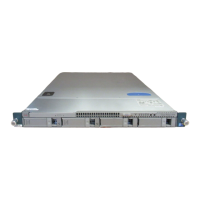© 2013 Cisco and/or its affiliates. All rights reserved. This document is Cisco Public Information. Page 41 of 48
level of visibility is not offered by the Cisco UCS VIC. For more information about configuring QoS classification
and marking, refer to the Cisco Nexus 1000V QoS configuration guide.
Upstream Switch Connectivity
The Cisco Nexus 1000V can be connected to any upstream switch (any Cisco switch as well as switches from
other vendors) that supports standards-based Ethernet and does not require any additional capability to be
present on the upstream switch to function properly. Much of the design work for a Cisco Nexus 1000V solution
focuses on proper upstream switch connectivity.
You can connect a Cisco Nexus 1000V Switch to a physical infrastructure using either of two means:
●
Standard uplinks: A standard uplink is an uplink that is not a member of a PortChannel from the VEM to a
physical switch. It provides no capability to load balance across multiple standard uplink links and no high-
availability characteristics. When a standard uplink fails, no secondary link exists to take over. Defining two
standard uplinks to carry the same VLAN is an unsupported configuration. Cisco NX-OS will generate a
syslog message when this condition is detected.
Given the requirements of most data center networks, standard uplinks should rarely, if ever, be used in a
Cisco Nexus 1000V design.
●
PortChannels: Because Cisco Nexus 1000V Switches are end-host switches, the network administrator
can use a different approach than can be used on physical switches, implementing a PortChannel
mechanism in either of two modes:
◦
Standard PortChannel: The PortChannel is configured on both the Cisco Nexus 1000V Switch and the
upstream switch on the same number of ports. This approach is exactly the same as for regular
PortChannel (EtherChannel) configuration on physical switches.
◦
Special PortChannel: For some special PortChannels, such as virtual PortChannel host mode (vPC-HM)
subgroups using Cisco Discovery Protocol or manual mode, no PortChannel configuration is also
required on the upstream switch.
Regardless of the mode, PortChannels are managed using the standard PortChannel CLI construct, but
each mode behaves differently.
Standard PortChannel
A standard PortChannel on Cisco Nexus 1000V Switches behaves like an EtherChannel on other Cisco switches
and supports Link Aggregation Control Protocol (LACP). Standard PortChannels require that all uplinks in the
PortChannel be in the same EtherChannel on the upstream switch (Figure 34).

